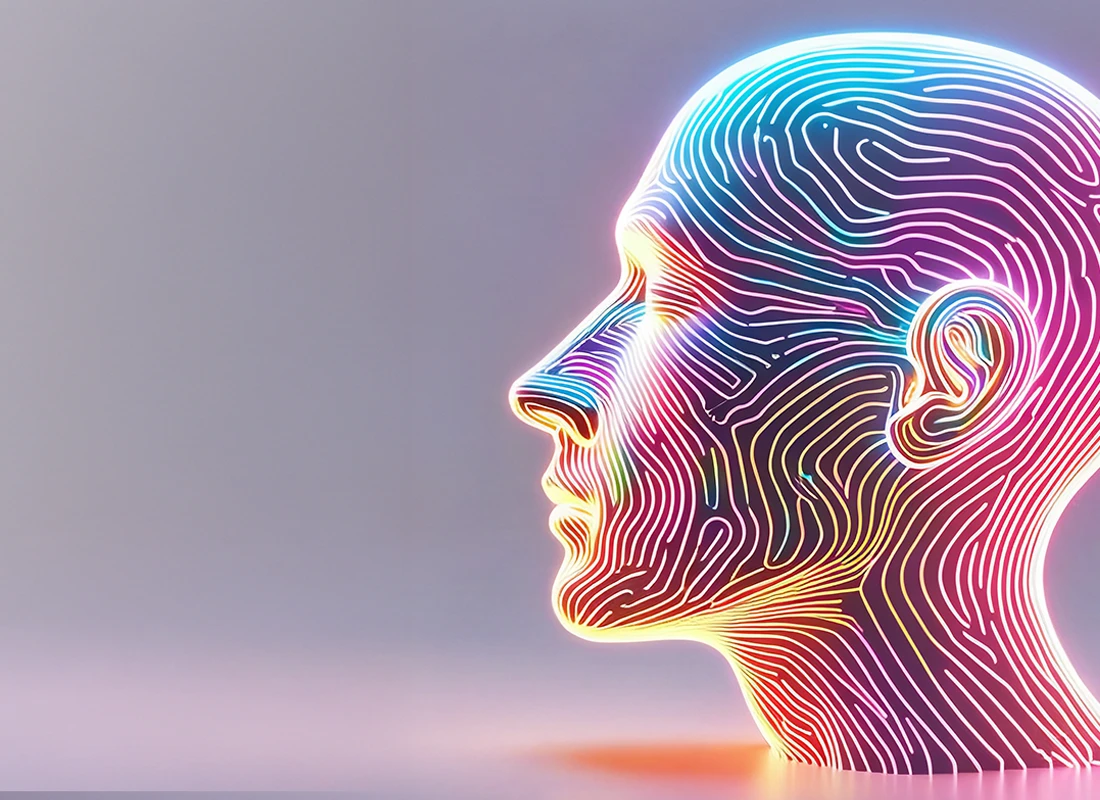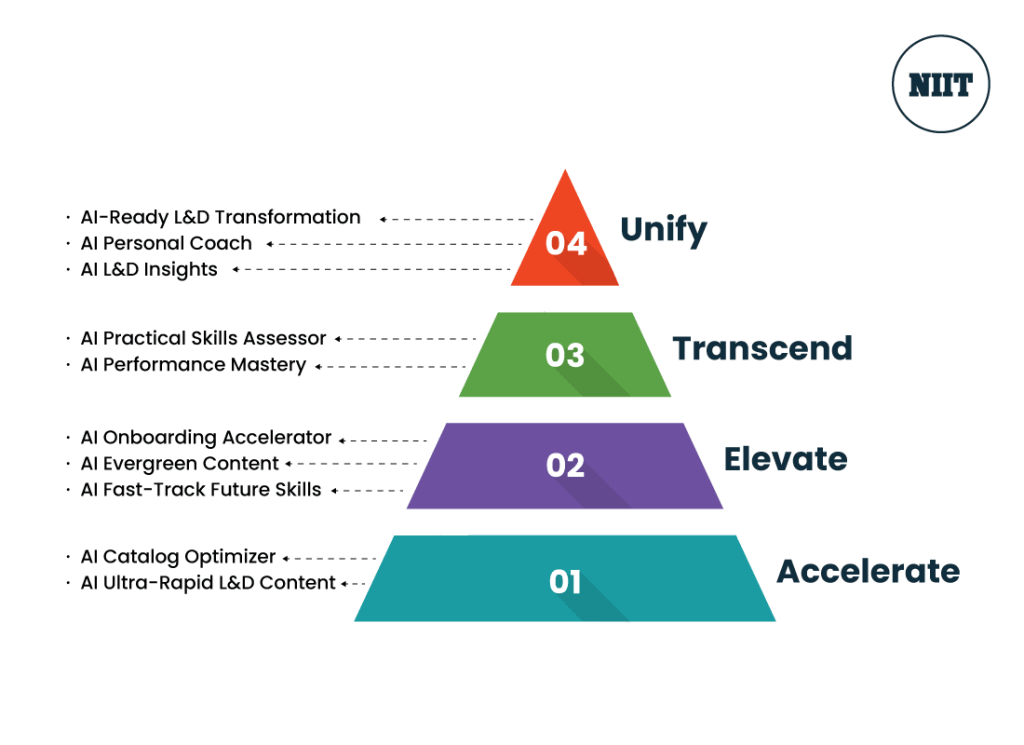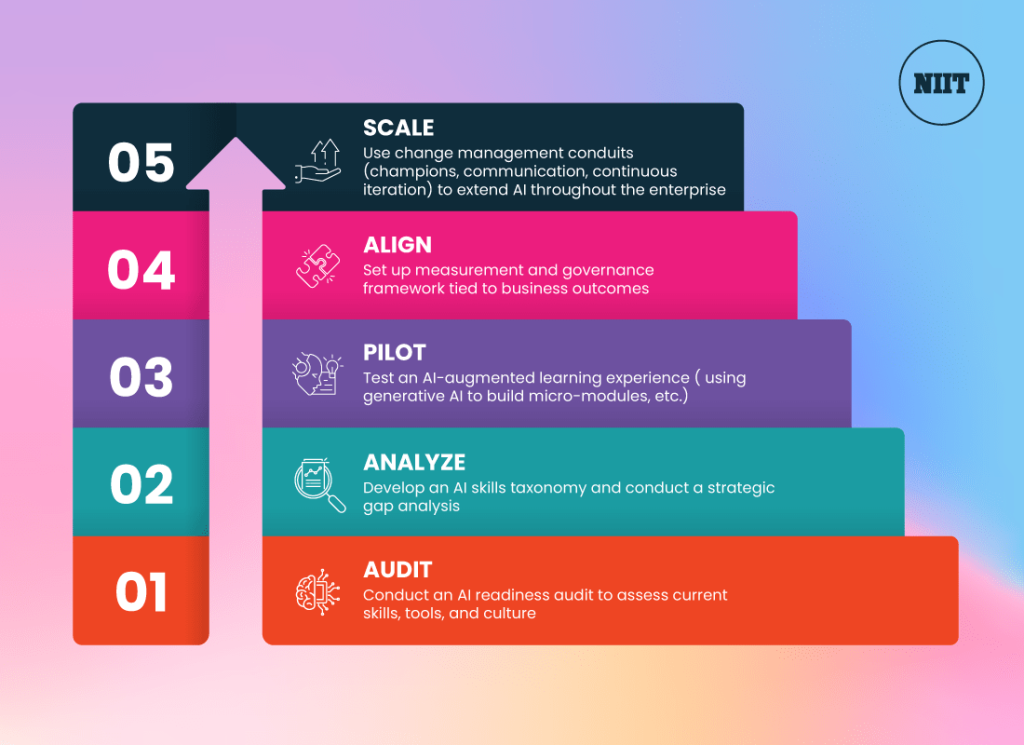
Training for an AI-First World: How Corporate Learning is Fueling Real Adoption and Change
In today’s rapidly evolving business environment, AI adoption is no longer optional - it’s a must-have for maintaining a competitive stance in the marketplace. Yet true success depends on more than just deploying the latest technologies across the enterprise; forward-thinking organizations today are investing in corporate learning that drives AI skills development. In this post, we’ll explore how today’s L&D organizations are integrating adaptive learning with AI using principles of change management to enable them to build confident, capable workforces that are ready to thrive in the AI-first world.
Embracing an AI-first mindset involves weaving artificial intelligence into every facet of the enterprise, from decision support and customer experience to internal operations. The real challenge, however, isn’t technology - it’s people. The gap between AI capability and true AI adoption often comes down to culture, readiness, and skills. Learning transformation and change management can close that gap. By investing in upskilling for AI, companies are transforming ambition into impact with generative AI in L&D.
Why L&D is Central to AI Adoption
For organizations pursuing AI adoption, learning and development is the engine of transformation. Traditional training can’t keep pace with the speed, personalization, and scale required for AI. Through learning transformation, L&D can bridge AI strategy and business goals. Change management is crucial, helping employees overcome resistance and embrace the AI mindset. Using AI to personalize learning and build new skills, companies can move faster, close knowledge gaps, and create a workforce that’s ready to keep learning and keep innovating as technology evolves.
Four Key Levers to Fuel Generative AI in L&D
Driving AI adoption demands structure, strategy, and smart learning design. There are four key levers that help organizations turn training into measurable impact:
- Skill Mapping and Capability Frameworks: Start by assessing AI skills development needs. Identify AI-adjacent skills, like data literacy and prompt engineering, and build a taxonomy or maturity model that will track readiness.
- Blended, Adaptive Learning Experiences: Through adaptive learning with AI, organizations can create personalized, just-in-time learning pathways.
- Embedded Learning in the Flow of Work: Move beyond standalone courses. Integrate AI-powered coaching, agents, and in-the-moment performance support that will make learning a seamless part of daily work, driving true learning transformation.
- Governance and Measurement: Use data to define clear metrics (speed to competence, business impact, and adoption KPIs) while ensuring strong governance around ethics, risk, and compliance.
The NIIT AI Factory model offers a structured approach to embedding generative AI into learning and development, exemplifying how learning transformation can drive AI adoption, ensuring scalable and effective AI skills development across organizations:

- Accelerate: Generative AI expedites course creation by producing high-quality, error-free content swiftly
- Elevate: AI collaborates with human expertise to develop complex, interactive learning experiences, tailoring content to suit diverse audiences
- Transcend: Advanced AI enables real-time, immersive learning through simulations and role-plays, using data to tailor coaching and assessment
- Unify: AI orchestrates personalized learning journeys by embedding learning into daily workflows for transformative experiences
When all of these levers work together, training becomes the catalyst for upskilling for AI, and, in an AI-first world, long-term organizational growth.
Change Management: From Pilots to Culture Shift
Successful AI adoption depends as much on people as it does on technology. Many employees may fear job loss, question AI’s accuracy, or simply feel exhausted by another “transformation.” Change management is the bridge that helps organizations move from cautious pilots into a lasting culture shift. The key lies in reframing AI as augmentation—not replacement—and demonstrating the ways it can be used to enhance human capabilities.
Being able to reference leadership alignment, storytelling, and visible early wins all build momentum and credibility. Recognizing champions and rewarding adoption support measurable progress. Meanwhile, learning transformation initiatives, with the support of generative AI in L&D, help employees gain confidence and competence.
In the end, when people feel empowered rather than replaced, AI becomes part of the company culture, rather than a short-term experiment.
Reducing SME Overhead with Learning Transformation
A global technology leader partnered with NIIT to accelerate AI adoption across its global facilities operations teams. Using generative AI in L&D and a reimagined learning transformation strategy, NIIT reduced the involvement of Subject Matter Experts (SMEs) by up to 60%, cutting development time while improving the quality and consistency of learning. The result: Faster time-to-competence, scalable skills development, and empowered teams able to perform complex, high-stakes tasks safely and efficiently, delivering measurable business impact.
The learning stages of the NIIT AI Factory model (Accelerate, Elevate, Transcend, and Unify) represent a progressive journey toward mature, AI-driven learning. Organizations first Accelerate using AI to streamline content creation and reduce SME time. The next stage is to Elevate through human-AI collaboration that enhances learning quality and engagement. The Transcend stage incorporates immersive, simulation-based experiences powered by adaptive learning with AI, and the final stage, Unify, integrates learning seamlessly into the flow of work, delivering continuous learning transformation that fuels sustainable AI adoption and workforce readiness.
Customers of the NIIT AI Factory have received outcomes that align with industry-wide results of AI-enhanced learning solutions, including:
- 91% voluntary completion rate
- 60% reduction in facilitator and employee time
- 80% reduction in total training time
- 19% productivity increase
AI Adoption Risks & Mitigation
Successful AI adoption depends on balancing innovation with intention. Common pitfalls, like relying too heavily on technology, inadequate change management, or neglecting to factor in company culture, can derail even the strongest learning transformation strategies.
To counter this, avoid “shiny object” solutions by embedding generative AI into real workflows and aligning closely with strategic business goals. Design strategies in conjunction with stakeholders, integrate L&D with AI and IT teams, and iterate quickly. Continuous learner feedback ensures that AI skills development remains relevant, responsible, and results-driven.
CLO Roadmap: 5 Steps to Adaptive Learning with AI
For CLOs looking to actively drive AI adoption, having a clear roadmap can turn strategy into action. Here’s our five-step plan:

Building a Culture of AI Skills Development
Learning transformation is the bridge to successful AI adoption. True impact comes from adaptive learning with AI, and embedding generative AI into company culture through effective change management.
Don’t settle for training alone; accelerate your L&D results with upskilling for AI. Schedule a free demo today.